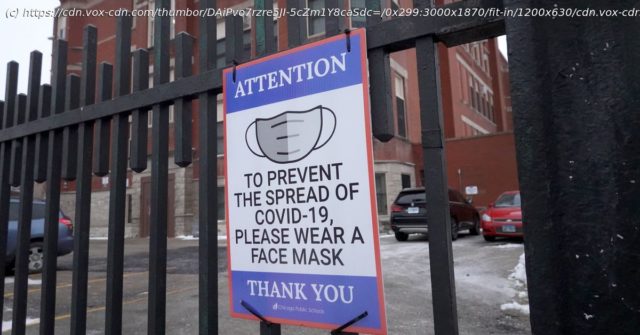And the problem started way before omicron.
Schools in Cleveland, Ohio, will be remote for the first week of January. So will schools in Charles County, Maryland; Reading, Pennsylvania; and Weehawken, New Jersey. The Chicago public schools closed on January 5 following a dispute between teachers and district officials over how to handle surging Covid-19 cases. All told, at least 4,500 schools across the country will close their physical buildings for one day or more in the first week of 2022, according to the data service Burbio, which has been tracking school calendars since 2020. Some level of school disruption was inevitable with the omicron variant, which is driving record case counts and swamping hospitals, transit lines, and emergency services around the country. But America’s public schools were struggling to stay open even before the latest surge hit, beset by quarantines, staffing troubles, and, sometimes, burnout among educators stretched to the breaking point by two years of pandemic instruction. You might not hear about it as much as disruptions in restaurants, retail, or shipping, but schools are facing a pandemic labor shortage, one that hampers their ability to respond to any crisis, let alone one as widespread as omicron. This one has been years in the making: public schools were under-resourced for decades before Covid-19 hit, with decrepit buildings, overcrowded classrooms, and underpaid teachers. Now that is coming back to haunt school districts as they struggle to stay open amid yet another virus surge. “Our schools are in a crisis across the nation,” said Sobia Sheikh, a high school math teacher in Washington state. That crisis started long before omicron, and without real changes to the way America values and funds its public school system, it’s likely to last long after it’s gone. The problems at public schools started long before omicron School closures have been a fixture of the pandemic since March 2020, when K-12 institutions in all 50 states shifted to remote learning to help stem the spread of Covid-19. Those closures varied in length from a few months in the South and Midwest to more than a year in parts of California, but by early 2021, teachers were getting vaccinated, case rates were falling, and experts were cautiously predicting a normal fall for kids, educators, and families. Obviously, that didn’t happen. Instead, public schools dealt with the rise of the delta variant, which helped ensure that quarantines were a fact of life for many students and some staff — in Los Angeles, for instance,3,500 students were quarantined as close contacts in the first week of the fall 2021 semester alone. Quarantines affected kids, who lost in-person class time, and families, who had to scramble to arrange child care, but they also affected teachers and other school staff. When a teacher is sick or in quarantine, someone has to cover their classes. The same is true for bus drivers, cafeteria workers, and other adults in school buildings — somebody has to do the work, or the school can’t function. Usually, substitute teachers can fill in the gaps, at least in the classroom. But in the fall, districts around the country started facing substitute shortages, brought on in part by the large number of teachers who had left the field since the pandemic began. That meant that when teachers were out, other staff at the school had to handle their classes — on top of their regular work. “Every day we’d get emails: Hey, we need someone to cover fourth period, sixth period, seventh period,” Sheikh said. At her school, counselors, each one already responsible for helping 400 to 500 students dealing with the stress, anxiety, and depression brought on by the pandemic, were pulled into the classroom to serve as substitute teachers. Without an adequate pool of substitutes, even a small number of staff absences could lead to chaos for a school. “Let’s say that as little as 5 percent of the teachers are sick or in quarantine,” said Dennis Roche, president of Burbio. “Way more than 5 percent of the rest of the staff is going to be involved at some point trying to cover those classes.” All those recruited to help out when colleagues are in quarantine, meanwhile, lose time they might ordinarily spend grading or planning class for the next day. Too much of this can mean classes or even whole schools have to shut down, often suddenly — in late fall, Burbio saw an increase in closures for staffing reasons.






